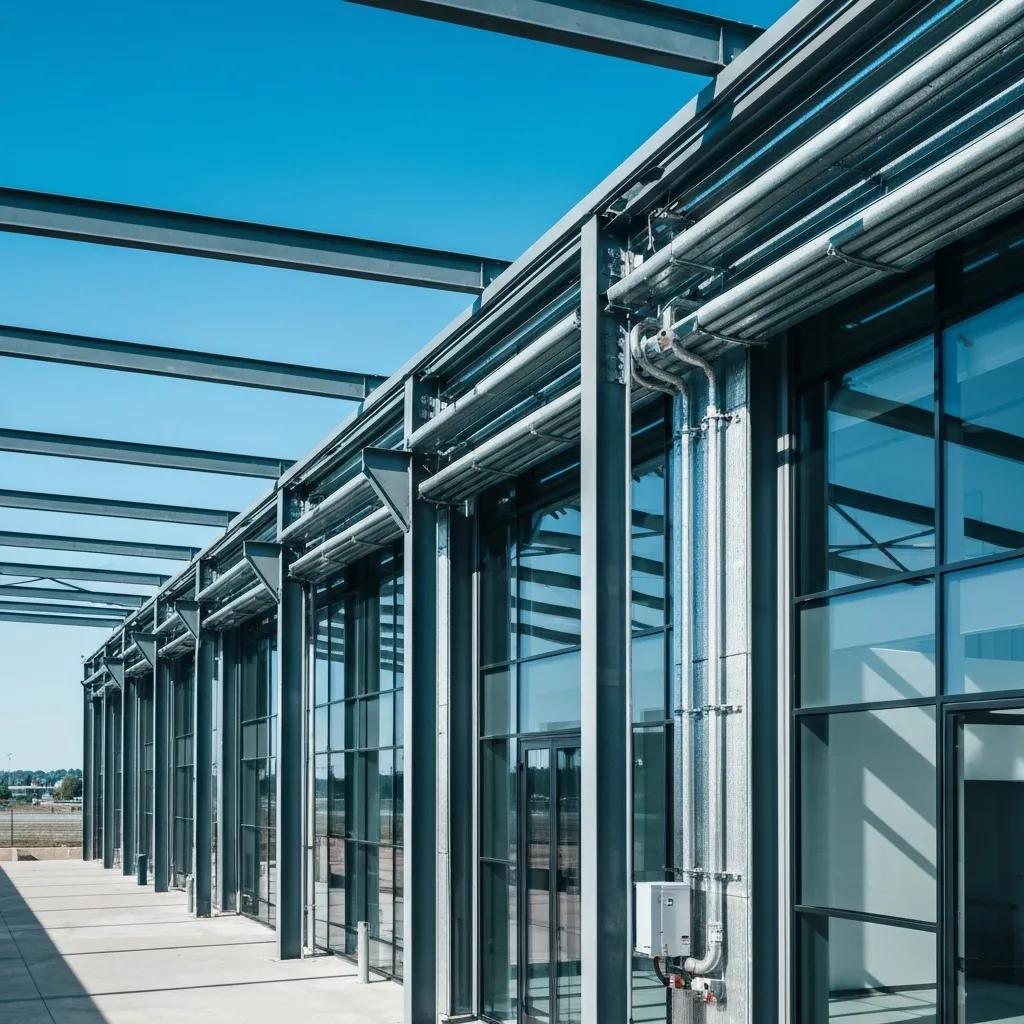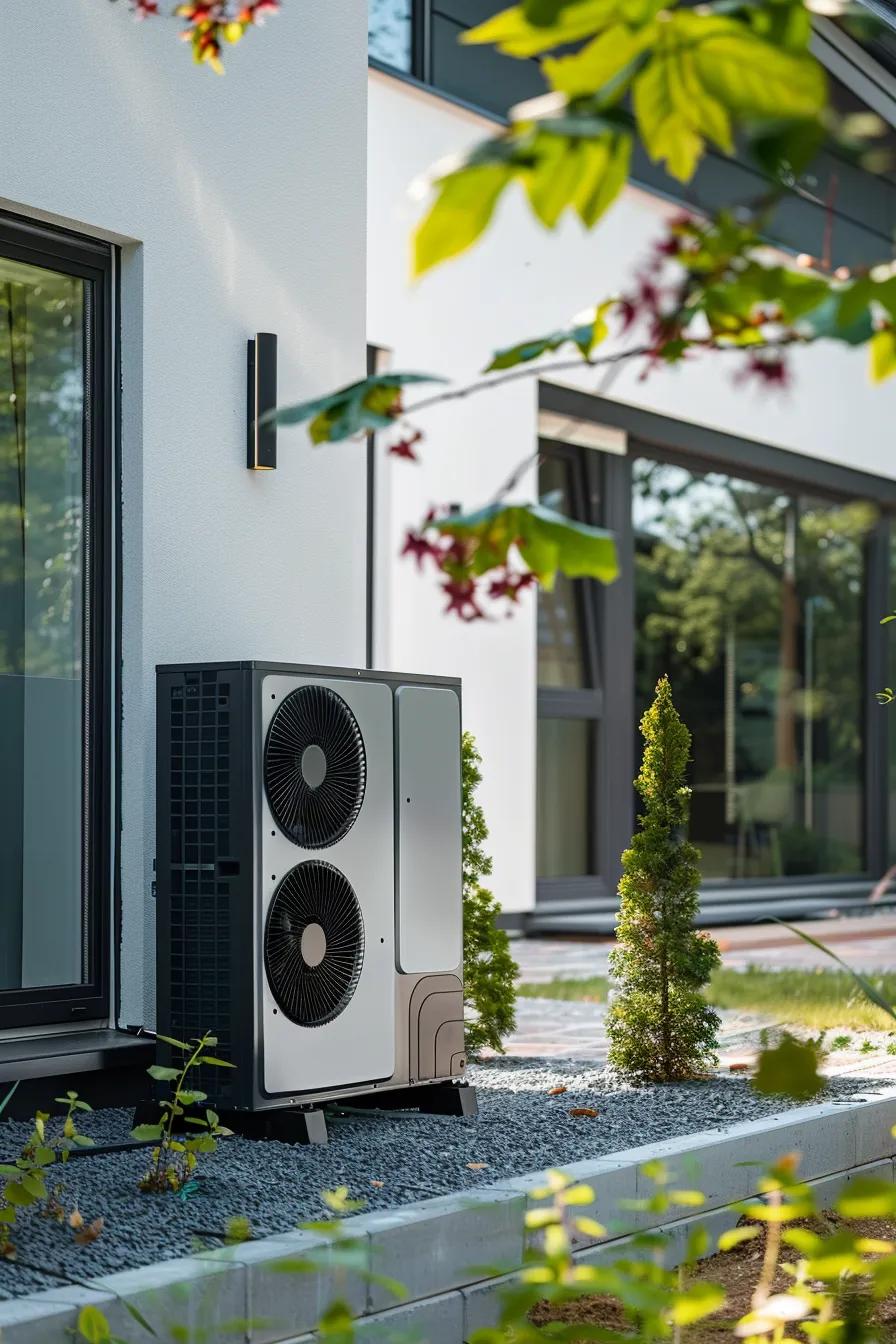Complete Guide to Commercial Air Source Heat Pumps for UK Businesses
Commercial air source heat pump technology harnesses ambient air to deliver efficient heating and cooling, offering businesses a sustainable alternative to fossil fuel systems while slashing operational costs. This guide explains how commercial ASHPs work, explores system types and components, examines financial and environmental benefits, and outlines pricing, funding, installation, and maintenance considerations. It also highlights how a specialist web design agency like SoWebDesigns can support renewable energy firms in showcasing their ASHP solutions online.
[Vertex AI Search, Parts Of An Air Source Heat Pump (Explained with Real Example), (2025)]
[Commercial Air Source Heat Pumps: Efficiency and Operation]
Commercial air source heat pumps (ASHPs) extract thermal energy from the outside air and transfer it into a building’s heating or hot water system, improving energy efficiency by up to 400%. The system circulates refrigerant through a compressor and heat exchanger to elevate low-temperature air into usable heat, reducing carbon emissions and operating costs for businesses.
What Is a Commercial Air Source Heat Pump and How Does It Work?
A commercial air source heat pump is a renewable HVAC technology that extracts thermal energy from outside air and transfers it into a building’s heating or hot water system, improving energy efficiency by up to 400%. By circulating refrigerant through a compressor and heat exchanger, the system elevates low-temperature air into usable heat, reducing carbon emissions and operating costs for businesses. Understanding this mechanism lays the foundation for selecting the right ASHP configuration for your premises.
How Does an Air Source Heat Pump Extract Heat from the Air?
Air source heat pumps absorb heat via a refrigerant loop that runs through an outdoor evaporator coil. The refrigerant vaporises at low temperature, gathers ambient thermal energy, and passes through a compressor that raises its pressure and temperature. Finally, a heat exchanger transfers this heat into the building’s heating circuit, delivering consistent warmth even in cold conditions down to –15 °C.
What Are the Key Components of a Commercial ASHP System?
Commercial ASHPs rely on a set of integrated parts:
- Compressor: Increases refrigerant pressure and temperature.
- Refrigerant: Substances like R32 or CO₂ that absorb and release heat.
- Evaporator Coil: Extracts thermal energy from outside air.
- Condenser Coil: Transfers heat into water or air distribution systems.
- Expansion Valve: Regulates refrigerant flow and pressure.
Each component ensures optimal heat transfer, forming a cycle that powers efficient commercial heating.
[Vertex AI Search, Parts Of An Air Source Heat Pump (Explained with Real Example), (2025)]
[Air Source Heat Pump Components and Operation]
Commercial ASHPs rely on a set of integrated parts, including a compressor, refrigerant, evaporator coil, condenser coil, and expansion valve. The compressor increases refrigerant pressure and temperature, while the evaporator coil extracts thermal energy from outside air.
Which Types of Commercial Air Source Heat Pumps Are Available?
Commercial ASHPs come in various designs to match building requirements. The table below outlines common options in the UK market:
| System Type | Operating Principle | Ideal Application |
|---|---|---|
| Monobloc | Self-contained unit with integrated refrigerant | Small to medium-sized premises |
| Split System | Outdoor condenser and indoor evaporator | Flexible layouts, larger buildings |
| Air-to-Water | Heats water for radiators or underfloor systems | Retrofitted hydronic networks |
| Air-to-Air | Directly supplies warm or cool air via ductwork | Warehouses, open-plan offices |
What Are the Benefits of Air Source Heat Pumps for Businesses?

Commercial ASHPs deliver compelling advantages in cost, sustainability, and performance. By leveraging ambient energy, businesses achieve lower utility bills, significant carbon reductions, and year-round climate control. These benefits collectively support ROI targets and corporate ESG commitments, making ASHPs a strategic choice for modern enterprises.
How Do ASHPs Reduce Energy Costs and Improve ROI?
Air source heat pumps can achieve a coefficient of performance (CoP) of 3.0–4.0, meaning they produce three to four units of heat for every unit of electricity consumed. This efficiency typically cuts heating costs by 50–75%, translating into payback periods of 3–7 years depending on system size and energy tariffs.
[Cotswold Energy Group, Commercial Air Source Heat Pump Guide, (2025)]
[Air Source Heat Pump Efficiency and Performance]
Air source heat pumps can achieve a coefficient of performance (CoP) of 3.0–4.0, meaning they produce three to four units of heat for every unit of electricity consumed. This efficiency typically cuts heating costs by 50–75%.
How Do ASHPs Support Carbon Footprint Reduction and Net Zero Goals?
By replacing gas or oil boilers, ASHPs can lower carbon emissions by up to 70% when powered by a low-carbon electricity mix. This reduction directly supports UK Net Zero targets and enhances corporate sustainability credentials through measurable decarbonisation.
Which Business Sectors Benefit Most from Commercial ASHPs?
Different industries gain unique value from ASHPs:
- Offices: Stable indoor climate and lower running costs.
- Retail: Comfortable customer environments and energy savings.
- Industrial: Process heating support and reduced peak loads.
- Hospitality: Reliable hot water and space heating with minimal footprint.
Sector-specific case studies reveal tailored performance and cost outcomes.
How Does an ASHP Compare to a Gas Boiler for Commercial Use?
| Metric | Commercial ASHP | Gas Boiler |
|---|---|---|
| Efficiency | 300–400% (CoP 3.0–4.0) | 90–94% |
| Lifespan | 20–25 years | 10–15 years |
| Maintenance | Low-voltage electrical checks | Annual flue and burner servicing |
| Carbon Emissions | 60–75% reduction | Baseline fossil fuel output |
How Much Does Commercial Air Source Heat Pump Installation Cost?
The typical capital cost for commercial ASHP installation ranges from £8,000 to £25,000 per unit, influenced by system capacity, complexity, and integration requirements. Understanding cost drivers and financial incentives can help businesses budget effectively and secure funding.
What Factors Influence Installation Costs for Businesses?
Major cost determinants include:
- System Capacity: Higher kW ratings demand larger units and piping.
- Configuration: Split systems and air-to-water integrations add labour.
- Site Complexity: Access, structural works, and pipe runs affect hours.
- Controls Integration: Linking to BMS or smart thermostats increases setup time.
These factors guide feasibility assessments and project scoping.
What Grants and Funding Are Available for Commercial ASHPs in the UK?
The UK government offers the Boiler Upgrade Scheme, providing up to £7,500 per non-domestic property, and the Industrial Energy Transformation Fund (IETF) for larger-scale upgrades. Eligibility criteria depend on fossil fuel displacement and energy performance improvements.
[GOV.UK, Boiler Upgrade Scheme, (2022)]
[Boiler Upgrade Scheme and Heat Pump Grants in the UK]
The UK government offers the Boiler Upgrade Scheme, providing up to £7,500 per non-domestic property. This grant encourages property owners to replace existing fossil fuel heating with more efficient, low-carbon heating systems, including heat pumps.
How to Choose the Right Manufacturer and Installer for Your Business?
Selecting an MCS-accredited installer ensures compliance and warranty support. Leading manufacturers include Daikin, Mitsubishi Electric, Viessmann, and Vaillant. When evaluating providers, consider firms like Neater Heat: Home Heating, Renewables & Solar Solutions for professional commercial installations across Hampshire, Surrey, Berkshire, and Greater London.
How Should Businesses Maintain Commercial Air Source Heat Pumps?
Regular maintenance preserves efficiency and extends service life. A planned preventative maintenance (PPM) schedule keeps components in peak condition and prevents downtime.
What Are the Best Practices for ASHP Maintenance and Servicing?
Recommended tasks include:
- Quarterly filter inspections and cleaning.
- Annual refrigerant charge and pressure checks.
- Biennial compressor performance evaluation.
- Inspection of electrical connections and control settings.
[Maximum Climate Control, Air Source Heat Pump Maintenance Best Practices in London, (2025)]
[Air Source Heat Pump Maintenance Best Practices]
Regular maintenance preserves efficiency and extends service life. Recommended tasks include quarterly filter inspections and cleaning, annual refrigerant charge and pressure checks, and biennial compressor performance evaluation.
How Can Businesses Maximise ASHP Efficiency and Lifespan?
Proactive measures such as maintaining airflow around outdoor units, calibrating sensors, and updating firmware on control systems all contribute to long-term performance and reliability.
What Are Common Issues and How Are They Resolved?
Typical faults involve refrigerant leaks, fan failures, or sensor errors. Certified technicians use diagnostic tools to pinpoint faults, recharge refrigerant, reset controls, or replace defective components swiftly, restoring system operation.
What Are the Key Considerations for Installing Commercial Air Source Heat Pumps?
Proper planning and site evaluation ensure ASHP success. Factors such as building envelope quality, existing heating systems, and integration with automation platforms determine overall viability.
What Steps Are Involved in the Commercial ASHP Installation Process?

- Site Survey: Assess heat demand, space, and power supply.
- System Design: Select capacity, layout, and controls.
- Permitting & Planning: Secure local approvals and planning consent.
- Installation: Mount units, run piping, and configure controls.
- Commissioning: Perform performance tests and handover documentation.
A structured process ensures compliance and optimised performance.
How Do Building Insulation and Heating Systems Affect ASHP Suitability?
Well-insulated buildings with efficient heat emitters like underfloor systems maximise ASHP efficiency. Poor insulation or oversized radiators can lead to underperformance and higher running costs.
How Can ASHPs Integrate with Smart Building Management Systems?
By connecting ASHP controls via BACnet or Modbus protocols, businesses can optimise temperature setpoints, utilise demand-response capabilities, and track performance metrics in real time for continuous improvement.
Commercial air source heat pumps represent a smart investment for businesses aiming to reduce costs, cut emissions, and enhance operational resilience. With informed system selection, available grants, and diligent maintenance, companies can unlock substantial ROI and sustainability gains. For renewable energy providers seeking to showcase their ASHP expertise, SoWebDesigns offers tailored website design and SEO services that highlight technology benefits and drive qualified enquiries. Engage with our team today to build a compelling digital platform for your heat pump solutions.




